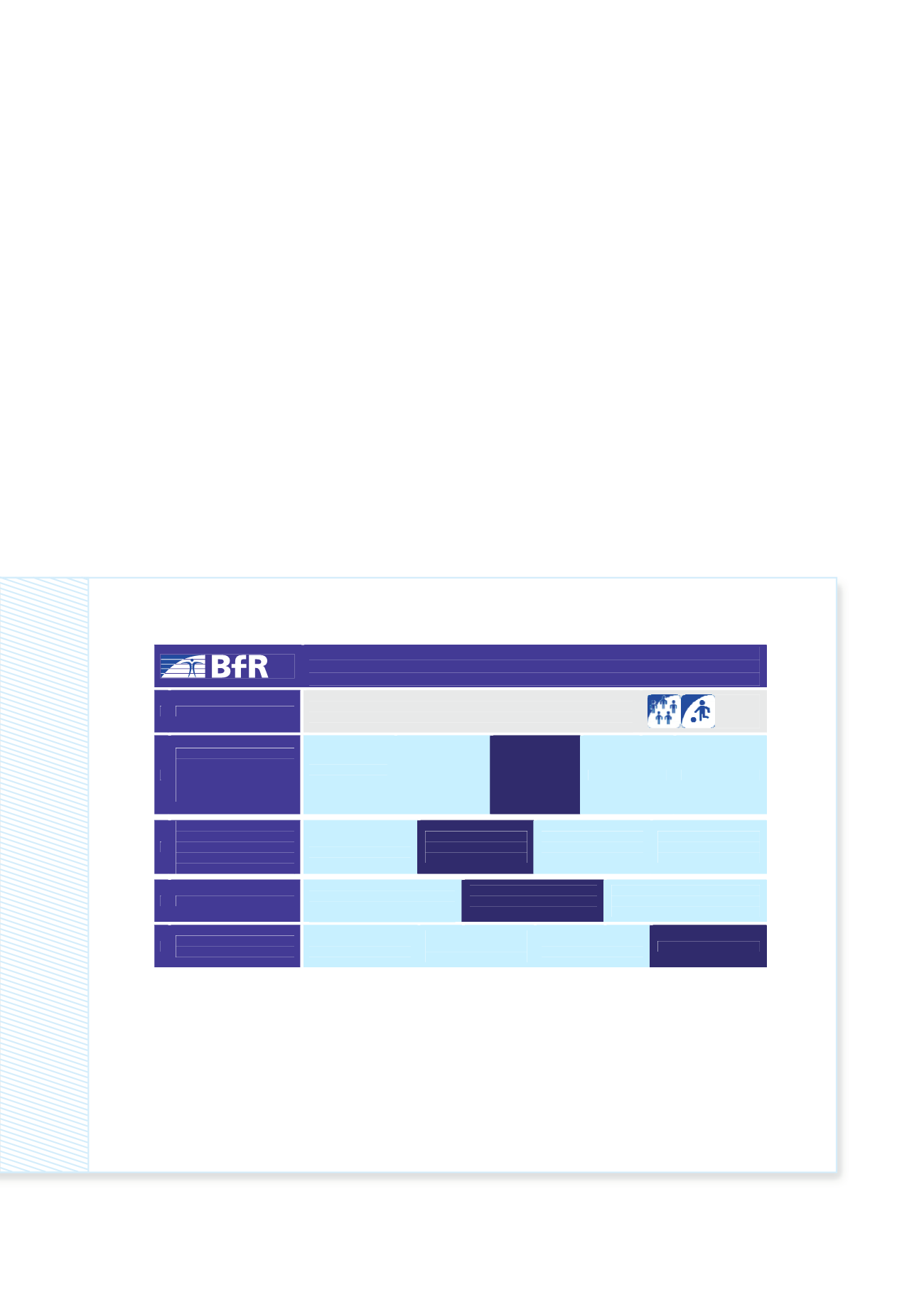
BfR | Annual Report 2013
72
Risks at a glance: the BfR “Risk Profile”
In order to be able to take measures to protect their own
health, consumers expect understandable information
and recommendations for action that they can implement
in their daily lives. To cater to these expectations, the sci-
entific opinions published by the BfR have also included
a so-called “Risk Profile” since April 2013. This takes the
form of a chart showing the risk characterisation, the
quality of the data and options for action at a glance.
The readers of an opinion can therefore easily identify
the facts of the matter at hand and the central character-
istics of the risk assessed in the opinion.
The BfR risk profile contains the five following elements.
The valid characteristics of the risk elements are graphi-
cally highlighted:
>
Affected group of persons
>
Probability of health impairment due to exposure
>
Severity of health impairment due to exposure
>
Validity of available data
>
Ability of the consumer to control the risk – by avoid-
ance or taking extra care
The characteristic “Controllability” plays a particularly im-
portant role in the perception of risks. Consumers often
perceive risks as being more significant, for example, if
they as individuals have no means of controlling a risk.
When developing the BfR risk profile, a deliberate deci-
sion was made not to state risk information solely based
on quantitative values. For laypeople in particular, quan-
titative data on the probability of occurrence of a health
hazard has only limited information value and often re-
sults in errors of judgement.
The BfR risk profile using the example of an opinion on perchlorate in food
www.bfr.bund.de
Bundesinstitut für Risikobewertung
BfR Risk Profile:
Perchlorate finds in foods
Opinion no. 022/2013
A Affected group
General population, children, people with thyroid disease or
iodine deficiency
B
Probability of health
impairment due to one-
time consumption of large
portions of products with
high concentrations
Practically
impossible
Improbable
Possible
Probable
Certain
C
Severity of health impair-
ment due to one-time
consumption of large
portions of products with
high concentrations
No
impairment
Slight
impairment
[reversible]
Moderate
impairment
[reversible/irreversible]
Serious
impairment
[reversible/irreversible]
D Validity of available data
High:
the most important data is avail-
able and there are no contradic-
tions
Medium:
some important data is
missing
Low:
much important data is missing or
contradictory
E Controllability by the
consumer [1]
Control
not necessary
Controllable through
precautionary
measures
Controllable through
avoidance
Not controllable
Text fields with dark blue background highlighting characterise the properties of the risk assessed in this Opinion
.
(for more detailed information, please refer to the text in BfR Opinion no. 022/2013 dated 28 June 2013).
Notes
The Risk Profile is designed to visualise the risk described in the BfR Opinion. It is not designed to permit risk comparisons. The Risk Profile
should only be read together with the Opinion.
Line E - Controllability by the consumer
[1] – Efforts are needed on all levels to reduce the entry of perchlorate into the food chain and therefore to minimise the burden for consumers.
The details in the line "Controllability by the consumer" are not designed to serve as a recommendation by the BfR but are of descriptive character.
FEDERAL INSTITUTE FOR RISK ASSESSMENT (BfR)
2 Findings
Perchlorate residues were found in various foods from more than 15 different countries of
origin. The highest number of perchlorate findings were reported for citrus fruit, berries and
small fruit, root vegetables, fruiting vegetables, leaf vegetables and fresh herbs.


